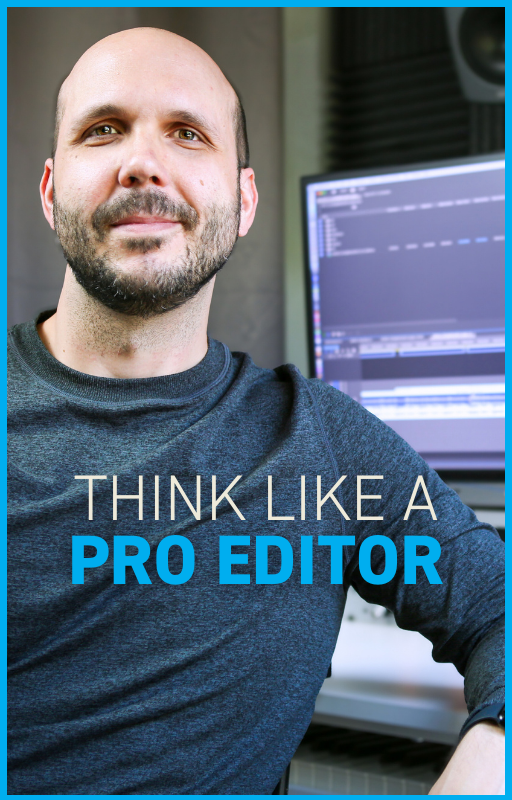Why I Edited Out A $10,000 Shot
Jul 26, 2024I’m going to tell you about the time I edited out a $10,000 shot…
But first I’m going to explain how editing is largely cutting out the bad bits, what it means to "kill your darlings", and the dangers of the sunk cost fallacy.
If you’ve read my articles, you’ve heard me talk about Walter Murch before. He’s an all-time great editor and one of the best writers on the subject. In his book, In the Blink of An Eye (affiliate), he tells this story: Walter met some of his wife’s childhood friends for the first time and one of them asked, “Well, what is it that you do?” Walter replied that he was studying film editing. The friend then said, “Oh, editing. That’s where you cut out the bad bits.” Walter was furious. Then he writes, twenty-five years down the road I’ve come to respect his unwitting wisdom.
The hard part is, of course, deciding what’s a bad bit. Editors starting out can struggle with this, in part because they have yet to develop an instinct for what is good and what is bad. But it can also be a challenge to let go of any bit, which I’ll unpack more later.
While I fully agree with Murch that much of editing is cutting out the bad bits, I think great editors take it a step further. Not only do they cut out the bad bits, but they also cut out good bits that don’t add to the story. Often attributed to William Faulkner, the term “Kill Your Darlings” refers to getting rid of unnecessary storylines, characters, or words in a piece of writing EVEN IF they are intrinsically good. So why is it so hard to “kill your darlings”?
I think the main reason we all struggle with killing our darlings is because it’s extremely difficult to get rid of something that you’ve already invested so much time and money in. In fact, there is a name for this. It’s known as the sunk cost fallacy and is defined as - "the general tendency for people to continue pursuing an option if they’ve invested time or money or resources in it." So that brings me to the story of when I edited out a $10,000 shot.
I’m a commercial editor and commercials are not cheap to make. For the sake of this example let’s say it costs $100,000 for a one-day, 10-hour commercial shoot. There are commercials that cost much more and commercials that cost much less, but this is a nice round number for this example. So a $100,000, 10-hour day means the producers are spending $10,000 an hour. Let’s say the director spends an hour to set up, shoot, and break down a shot. That’s a $10,000 shot just for labor and rentals (not even including the cost of writing and pre-production).
So I get the footage and am working through my first rough cut, which I always present as scripted. But on my second pass, I realize that the story flows better without the aforementioned shot, so I show that version to the director and he ends up agreeing with me. And so does the agency and the client. So we finish the spot and that awesome $10,000 shot never sees the light of day!
To be honest, this happens to me on a monthly basis. In fact, one of the reasons directors and creative directors hire me is because they trust me to tell them what’s working and what isn’t. And I am less vulnerable to the sunk cost fallacy because I didn’t write the commercial, I didn’t shoot the commercial, and I certainly didn’t pay for the commercial. Being able to determine when a good bit has to go away is one of the single most valuable gifts an editor can give a collaborator. But be gentle with this process because the sunk cost fallacy is at work.
So that’s the why, but what about the how? First and foremost, it takes time and experience to be able to discern what’s a good bit and what’s a bad bit. But here are a couple of short cuts that I use everyday - (1) always assume your edit is too long until it’s obvious you’ve made it too short, and (2) if you are having trouble deciding what’s better show two versions to an unbiased audience and get their opinion. Shorter and tighter will win 90% of the time.
One last thing… you might be saying, "Well the projects I make don’t have $10,000 shots, why is it still so hard?" It’s because all types of filmmaking are hard. You went to the trouble of picking up a camera, writing a script, capturing shots, and working hours and hours on an edit. The videos on this site are not very complex and are certainly not expensive, but I still find it hard to cut things out!

Austen is an ADDY award-winning film & commercial editor with over 20 years of experience. He has worked with global brands like Meta, KPMG, SAP, and Christianity Today. His PSA work has championed causes like school safety (with Matthew McConaughey), driving safety, and anti-tobacco. A thought leader in the editing field, his online lessons quickly amassed over 100K views after launch.

